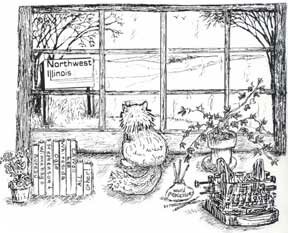
Discover rewarding casino experiences. 
|
In checking the county histories of all nearby counties through which a sizeable stream makes its way, they too had an era devoted to clamming. The Rock River’s length was once lined in season with clamming camps in the summer time, the period when clamming was done ... Winnebago, Ogle, Whiteside on through to the Mississippi. There were small button factories along the banks too. The Boepple factory in Muscatine, Iowa, founded by a German immigrant, was the largest and best known. Its salesmen roamed the riverbanks of the Midwest buying clam shells (by weight) for buttons ... Buttons were used on everything ... Glove wrists, coat sleeves, collars on men’s shirts (and their underwear’s “back door,” multi-buttons for women’s blouse sleeves and bodice. Zippers and Velcro hadn’t come into fashion yet. Snaps and hook & eye were secondary. So what was it that threatened the button industry besides the economy that closed up the small factories? It was a button of a different order ... plastic buttons. Yes, the plastic button that could be made in ANY size, shape, design and color as opposed to the pretty iridescent “pearl-like” button that was closure for everything. You name a color and it was manufactured in plastic. A design ... Anchors, military insignia, a basket of flowers could be made at a plastic button factory. The busy button factory at Sabula, Iowa, our friend ‘cross the Mississippi, lingered on, having been organized as early as 1895. PDQ Me will fill you in on that in the future. Limited demand was filled by some factories that lingered into the 1940’s. That large conical pile of clam shells with holes cut into them identified where a button factory was located. In the late 1930’s, early ‘40’s my maternal grandparents lived near Galt, Illinois out on the west side of Sterling. The backyard had a steep drop-off down which a set of steps had been built to the lower yard in which was the garden, the clothesline and chicken yard. Sometimes Grandma and I would take a walk towards the river, a ways off. Once we came upon a big pile of stamped out pile of shells. Oh, they were so exotic-looking, their pearly shells shimmering in the sun. Grandma said no to taking one, they belonged to someone else. Hmmmm! I still want one. You see such a shell once in awhile in antique/collectible malls. Yes, an uncommon relic of another era. With the onset of the Depression in the early 1930’s, and plastic buttons, the clamming industry took a dive. Only thirty dollars a ton for shells was brought for the hard working clammers so slowly they folded their tents or knocked down their shacks and silently stole away, well, kind of. The crude boats might have been let to rot, used to patch a shed roof or were shelter from the cold winds in duck season. If possible, the motors were sold or bartered for a car battery or rubber tire and tube. Another chapter had closed in the history of the Northwest. An exhibit of some of the artifacts of those chapters can be seen at the Byron History Museum. We hardly recognize them for their uncommonness today. Sometimes a camp would be populated by two hundred or more who developed a camaraderie amongst themselves though sometimes a bitter rivalry sprang up between the locals and the “Arkies,” as those from a distance were called. (Arkansas was a clamming state, too.) Gunshots might be heard, shouts and screams but rarely was it ever reported. Clammers had their own system as every neighborhood. It could be reported that most clammers got along amongst themselves and were, as the saying went, “Happy as Clams!”
|




